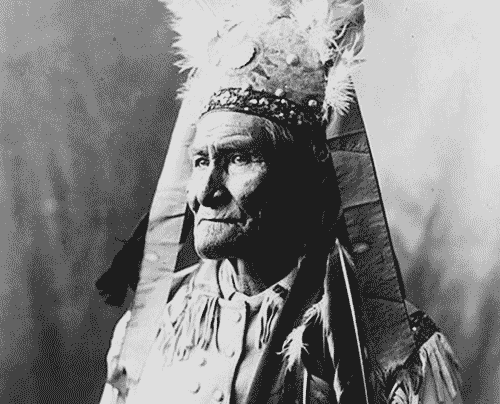<![CDATA[The 4th September marks the anniversary of Geronimo's surrender, the Bedonkohe region Apache chief who had battled for thirty years to protect his tribe's homeland. Geronimo was the last Indian chief to formerly surrender to government troops, with the event generally considered to symbolise the end of the American-Indian Wars in the South West United States. General Nelson Miles accepted the chief's surrender in 1886. The Apache chief had led the resistance against Texan and Mexican forces that had been aggressively expanding into Apache lands. By the time he admitted defeat at Fort Bowie on the on the Mexico-Arizona border, the Apaches were exhausted and hopelessly outnumbered. Geronimo was the name given to the Native American Indian leader by Mexican troops, during one of his earliest battles with them. It is the name that has been rendered into folklore, but his Chiricahua name was Goyathlay, which roughly means 'one who yawns'. He was born in 1829, near the Turkey Creek tributary to the Gila River, in what is now Arizona. His childhood was spent between Arizona and what is modern day Mexico. Relations between Mexican villages and Geronimo's tribe seemed generally quite peaceful in the 1850's, meaning the Indians felt no need to protect their camps. In the summer of 1858 Geronimo and the majority of the other warriors from his tribe went to trade with villagers in South Mexico. Upon their return they found that Mexican troops had attacked the camp, capturing supplies, weapons and livestock and massacring women and children. Among the victims were the majority of Geronimo's family. The Indians were forced to scatter from the area, and the event would go on to inspire Geronimo's attacks on American and Mexican settlers. In 1874 the Chiricahua Apaches were forced onto Arizona's San Carlos Reservation by the US Government. This is the point where Geronimo's legend began to form. Conditions on the reservation were harsh, and Geronimo led a band of Apaches who escaped from the reservation. Over the following decade they fought US Government troops and carried out raids on white settlements. They were captured and returned to the reservation on several occasions, but Geronimo's legend grew as the embarrassment for US forces increased. In May 1885 Geronimo and a hundred and fifty of his followers fled one last time. They were pursued into Mexico by 5,000 US troops led by General George Cook. The Native Americans were caught, but yet again managed to escape and continue their raids. At this point General Miles took over the pursuit, eventually capturing the Apache leader and forcing him to surrender one last time. Geronimo and his followers were sent to Florida and then Alabama, before finally ending up on a reservation near Fort Sill in Oklahoma. Geronimo became a successful farmer and converted to Christianity. His daring exploits had made him a celebrity, and in his old age he started to appear at fairs throughout the region, and even participated in Theodore Roosevelt's inauguration parade. Despite his acceptance into US culture, he was never allowed to return to the land of his birth. The warfare between the indigenous people of North America and Europeans settlers had been waged in varying degrees of intensity since the start of the seventeenth century. Indian tribes found themselves embroiled in the conflicts between the great powers of Europe as they vied for control in the New World, with various countries forming and then breaking alliances with them. Later, in the eighteenth century various tribes, such as the Cherokees, were pushed out of their home lands as colonial pioneers looked to expand their territories. Forced relocation of indigenous tribes continued steadily throughout the period, and the US' capture of Texas in the 1840's triggered a new surge of relocations and conflicts. By the end of the nineteenth century, most of the former indigenous tribes had been relocated or wiped out, with the Native American culture and people almost extinct and struggling for survival. ]]>
The Anniversary of Geronimo's Surrender
